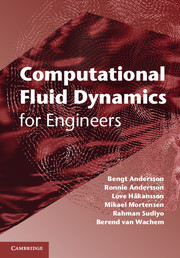4 - Turbulent-flow modelling
Published online by Cambridge University Press: 05 January 2012
Summary
This chapter provides an insight into the physical nature of turbulence and the mathematical framework that is used in numerical simulations of turbulent flows. The aim is to explain why turbulence must be modelled and how turbulence can be modelled, and also to explain what is modelled with different turbulence models. In addition, the limitations of the turbulence models are discussed. The intention is to give you such an understanding of turbulence modelling that you can actually suggest appropriate turbulence models for different kinds of turbulent flows depending upon their complexity and the required level of description.
The physics of fluid turbulence
Turbulence is encountered in most flows in nature and in industrial applications. Natural turbulent flows can be found in oceans, in rivers and in the atmosphere, whereas industrial turbulent flows can be found in heat exchangers, chemical reactors etc. Most flows encountered in industrial applications are turbulent, since turbulence significantly enhances heat- and mass-transfer rates. In industry a variety of turbulent multiphase flows can be encountered. Turbulence plays an important role in these types of flows since it affects processes such as break-up and coalescence of bubbles and drops, thereby controlling the interfacial area between the phases. Thus, turbulence modelling becomes one of the key elements in CFD.
- Type
- Chapter
- Information
- Computational Fluid Dynamics for Engineers , pp. 62 - 112Publisher: Cambridge University PressPrint publication year: 2011
- 1
- Cited by



